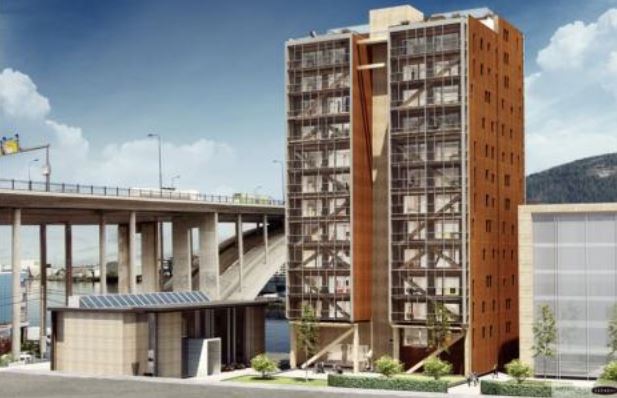Not only does using timber reduce greenhouse gas emissions by eliminating the need for cement and steel production, but timber buildings also become carbon sinks as they store carbon dioxide absorbed by the trees harvested and used as engineered timber — put simply, carbon dioxide is kept from being released into the air.
“Urbanization and population growth will create a vast demand for the construction of new housing and commercial buildings – hence the production of cement and steel will remain a major source of greenhouse gas emissions unless appropriately addressed,” says the study’s lead-author Galina Churkina who is affiliated to both the Yale School of Forestry and Environmental Studies in the US and the Potsdam Institute for Climate Impact Research in Germany (PIK).
“Yet, this risk for the global climate system could be transformed into a powerful means to mitigate climate change by substantially increasing the use of engineered timber for construction worldwide. Our analysis reveals, that this potential can be realized under two conditions. First, the harvested forests are sustainably managed. Second, wood from demolished timber buildings is preserved on land in various forms.”
According to the UN, there will be an estimated 2.3 billion more people living in urban areas by 2050. This significant population boom will require additional housing. Emissions from mineral-based construction materials could reach up to 20% of the CO2 emissions budget up to 2050 — the emissions budget is to keep global warming below 2 degrees Celsius.
But if most of these new buildings are made out of wood, they could potentially store up to 700 million tons of carbon dioxide every year, according to the study.
Protecting forests is key
“Protecting forests from unsustainable logging and a wide range of other threats is thus key if timber use was to be substantially increased,” co-author Christopher Reyer from PIK emphasizes. “Our vision for sustainable forest management and governance could indeed improve the situation for forests worldwide as they are valued more.”
Building ourselves a safe home on this planet
“Trees offer us a technology of unparalleled perfection,” Hans Joachim Schellnhuber says, co-author of the study and Director Emeritus of PIK. “They take CO2 out of our atmosphere and smoothly transform it into oxygen for us to breathe and carbon in their trunks for us to use. There’s no safer way of storing carbon I can think of. Societies have made good use of wood for buildings for many centuries, yet now the challenge of climate stabilization calls for a very serious upscaling. If we engineer the wood into modern building materials and smartly manage harvest and construction, we humans can build ourselves a safe home on Earth.”
Journal Citation
Churkina, G., Organschi, A., Reyer, C.P.O. et al. Buildings as a global carbon sink. Nat Sustain (2020). https://doi.org/10.1038/s41893-019-0462-4

